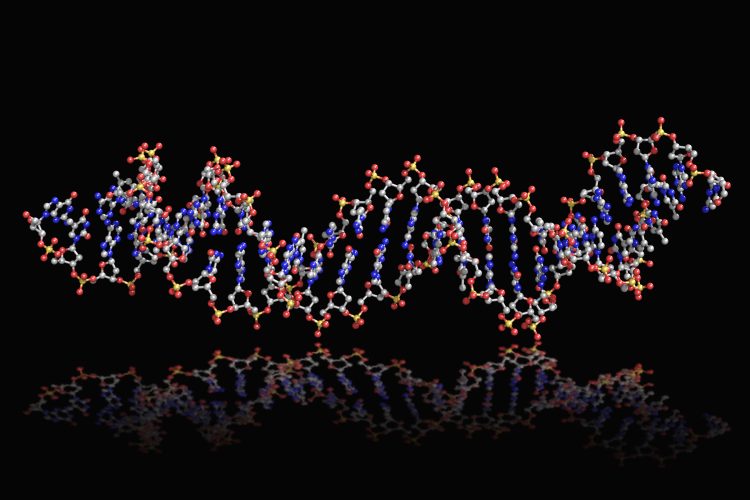Engineered DNA aptamers outsmart viral infection pathways
Posted: 13 June 2025 | Drug Target Review | No comments yet
EPFL scientists have engineered virus-inspired DNA aptamers that bind infection targets with record selectivity. This innovation could change how we diagnose and treat infectious diseases.


Researchers at the Swiss Federal Institute of Technology Lausanne (EPFL) have developed a new method to create synthetic DNA molecules called aptamers, designed to bind viruses with exceptional selectivity. This approach copies how viruses latch onto cells. As a result, it could help create quicker, more precise diagnostics and better treatments for infectious diseases.
Inspired by nature’s own tricks
Aptamers are short pieces of DNA or RNA that bind specific targets, much like antibodies, but are easier and cheaper to produce. Previously, scientists screened millions of aptamer sequences, each intended to bind just one site on a protein. These are called “monovalent” binders.
However, many viruses, including SARS-CoV-2, HIV, and influenza, use complex proteins made of three identical subunits, known as trimers, to invade cells. Monovalent aptamers often struggle to latch onto these complex targets effectively.
Biomarkers aren’t just supporting drug discovery – they’re driving it
FREE market report
From smarter trials to faster insights, this report unpacks the science, strategy and real-world impact behind the next generation of precision therapies.
What you’ll unlock:
- How biomarkers are guiding dose selection and early efficacy decisions in complex trials
- Why multi-omics, liquid biopsy and digital tools are redefining the discovery process
- What makes lab data regulatory-ready and why alignment matters from day one
Explore how biomarkers are shaping early drug development
Access the full report – it’s free!
Dr Maartje Bastings, who leads the Programmable Biomaterials Lab at EPFL, explained:
“You can’t control where a monovalent binder interacts with its target: for example, it may bind to the side of a protein, rather than the binding interface, reducing its functionality. In other words, you can’t choose the spot on the wall where a certain spaghetti noodle will stick.”
To solve this, Bastings and her team developed a new approach. By designing special ‘scaffolds’ that mimic the geometry of viral spike proteins, they encouraged aptamers to assemble in groups of three – matching the trimeric structure of their targets from the very start.


Illustration of the Multivalent Evolved DNA-based SUpramolecular Assemblies (MEDUSA), shown in white, interacting with a target protein (pink). Credit: 2025 PBL EPFL CC BY SA 4.0
Engineering ultra-strong binders
The team calls their approach Multivalent Evolved DNA-based SUpramolecular Assemblies (MEDUSA). Aptamers created using MEDUSA bound their targets 10 to 1,000 times more strongly than previous versions and with much greater selectivity. This is especially important for diagnostic tests, which need to avoid false positives.
We have retro-engineered the natural paradigm seen in viruses, in which multivalent molecular complexes co-evolve.
PhD student and first author Artem Kononenko summed up the achievement:
“We have retro-engineered the natural paradigm seen in viruses, in which multivalent molecular complexes co-evolve, and translated it into a new binder discovery method that allows us to select multivalent binders that can block such viruses.”
Once promising aptamers are found, they are improved further through a process of laboratory evolution. While the design of new scaffolds can be done in hours, the refinement stage currently takes weeks. The researchers are now working to speed this up, aiming for faster development of new diagnostics and treatments.
The team is already looking to tackle more complex pathogens, such as Dengue fever and anthrax, which use even more elaborate protein structures. They hope to use artificial intelligence in the future to design custom aptamers for any viral threat.
By giving viruses ‘a taste of their own medicine’, EPFL’s breakthrough could make future outbreaks easier to diagnose and treat.
The full study was published in Nature Nanotechnology.
Related topics
Analysis, Assays, Bioengineering, Drug Discovery, Drug Discovery Processes, Nanotechnology, Sequencing, Synthetic Biology, Virology
Related conditions
Anthrax, Dengue fever, HIV, Influenza, SARS-CoV-2
Related organisations
Ecole Polytechnique Fédérale De Lausanne (EPFL)








